For the first 5000 years of civilization, humans relied on foods and herbs for medicine. Only in the past 50 years have we forgotten our medicinal “roots” in favor of patent medicines. While pharmaceuticals have their value, we should not forget the well-documented, non-toxic and inexpensive healing properties of whole foods. The following list is but a sampling of the health benefits from whole foods. (for Part 1, A-C click here, for Part 2, D-L click here)
Melon (green and yellow, such as cantaloupe and honeydew). Has anti-coagulant (blood-thinning) activity. Contains the antioxidant beta carotene.
Milk. Milk fat promotes cancer and heart disease. Milk is also an unappreciated terror in triggering “allergic” reactions that induce joint pain and symptoms of rheumatoid arthritis, asthma, irritable bowel syndrome and diarrhea. In children and infants milk is suspected to cause or contribute to colic, respiratory problems, sleeplessness, itchy rashes, migraines, epileptic seizures, ear infections and even diabetes. May retard healing of ulcers.
Mushroom (Asian, including shiitake). A longevity tonic, heart medicine and cancer remedy in Asia. Current tests show mushrooms, such as maitake, help prevent and/or treat cancer, viral diseases, such as influenza and polio, high blood cholesterol, sticky blood platelets and high blood pressure. Eaten daily, maitake or shiitake, fresh (three ounces) or dried (one-third ounce), cut cholesterol by 7 and 12 percent respectively. A shiitake compound, lentinan, is a broad-spectrum antiviral agent that potentiates immune functioning. Used to treat leukemia in China and breast cancer in Japan. Extract (sulfated B-glucans) has been declared by Japanese scientists more effective as an AIDS drug than the common drug AZT. Eating black (“tree ear’) mushroom “thins the blood.” No therapeutic effects are known for the common U.S. button mushroom. Some claim this species has cancer-causing potential (hydrazides) unless cooked.
Mustard (including horseradish). Recognized for centuries as a decongestant and expectorant. Helps break up mucus in air passages. A good remedy for congestion caused by colds and sinus problems. Also antibacterial. Increases metabolism, burning off extra calories. In one British test about three-fifths of a teaspoon of ordinary yellow mustard increased metabolic rate about 25 percent, burning forty-five more calories in three hours.
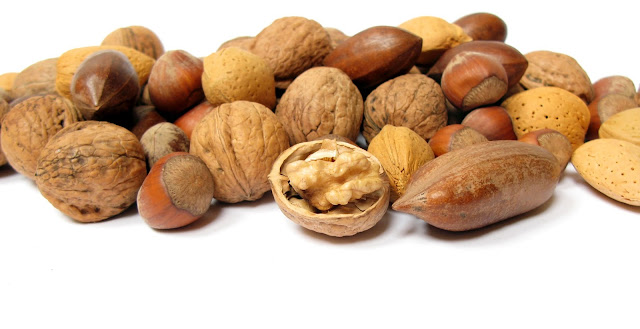
Nuts. Anti-cancer and heart-protective properties. A key food among Seventh-Day Adventists, known for their low rates of heart disease. Walnuts and almonds help reduce cholesterol, contain high concentrations of antioxidant oleic acid and mono-unsaturated fat, similar to that in olive oil, known to protect arteries from damage. Nuts generally are high in antioxidant vitamin E, shown to protect against chest pain and artery damage. Brazil nuts are extremely rich in selenium, an antioxidant linked to lower rates of heart disease and cancer. Walnuts contain ellagic acid, an antioxidant and cancer-fighter, and are also high in omega-3 type oil. Nuts, including peanuts, are good regulators of insulin and blood sugar, preventing steep rises, making them good foods for those with glucose intolerance and diabetes. Peanuts also are estrogenic. Nuts have been found lacking in the diets of those who later develop Parkinson’s disease. Prime cause of acute allergic reactions in susceptible individuals.
Oats. Can depress cholesterol 10 percent or more, depending on individual responses. Oats help stabilize blood sugar, have estrogenic and antioxidant activity. They also contain psychoactive compounds that may combat nicotine cravings and have anti-depressant powers. High doses can cause gas, abdominal bloating and pain in some.
Olive oil. Lowers bad LDL cholesterol without lowering good HDL cholesterol. Helps keep bad cholesterol from being converted to a toxic or “oxidized” form. Thus, helps protect arteries from plaque. Reduces blood pressure, helps regulate blood sugar. Has potent antioxidant activity. Best oil for kitchen cooking and salads.

Onion (including chives, shallots, scallions, leeks). Reputed in ancient Mesopotamia to cure virtually everything. An exceptionally strong antioxidant. Full of numerous anti-cancer agents. Blocks cancer dramatcally in animals. The onion is the richest dietary source of quercetin, a potent antioxidant (in shallots, yellow and red onions only-not white onions). Specifically linked to inhibiting human stomach cancer. Thins the blood, lowers cholesterol, raises good-type HDL cholesterol (preferred dose: half a raw onion a day), wards off blood clots, fights asthma, chronic bronchitis, hay fever, diabetes, atherosclerosis and infections. Anti-inflammatory, antibiotic, antiviral, thought to have diverse anti-cancer powers. Quercetin is also a sedative. Onions aggravate heartburn, may promote gas.
Orange. Natural cancer-inhibitor, includes carotenoids, terpenes and flavonoids. Also rich in antioxidant vitamin C and beta-carotene. Specifically tied to lower rates of pancreatic cancer. Orange juice protected mice sperm from radiation damage. Because of its high vitamin C, oranges may help ward off asthma attacks, bronchitis, breast cancer, stomach cancer, atherosclerosis, gum disease, and boost fertility and healthy sperm in some men. Problems like
gum disease can escalate quickly so swift management of the problem will be the key to stopping it in its tracks. While we briefly mention gum disease, something else other than oranges that can help prevent it or even resolve this issues is regularly visiting the dentist. By simply searching for your local dentist, for example
Dentist Healdsburg (if you live in this area of California) on Google, being able to treat gum disease may not be as difficult as you initially thought.
May aggravate heartburn. Many flowers and herbs and fruits contain different terpenes responsible for plants and herbs varying smells, along with these smells terpenes can offer different healing and medicinal benefits too, if you’d like to learn more you can read into what are terpenes and why do that matter?
Parsley. Anti-cancer because of its high concentrations of antioxidants, such as monoterpenes, phthalides, polyacetylenes. Can help detoxify carcinogens and neutralize certain carcinogens in tobacco smoke. Also, has diuretic activity.
Pineapple. Suppresses inflammation. A main constituent, an antibacterial enzyme called bromelain, is anti-inflammatory. Pineapple aids digestion, helps dissolve blood clots and is good for preventing osteoporosis and bone fractures because of its very high manganese content. It is also antibacterial and anti-viral and mildly estrogenic.
Plum. Antibacterial. Anti-viral. Laxative.
Potato (white). Contains anticancer protease inhibitors. High in potassium, thus may help prevent high blood -pressure and strokes. Some estrogenic activity.
Prune. A well known laxative. High in fiber, sorbitol and natural aspirin.
Pumpkin. Extremely high in beta carotene, the antioxidant reputed to help ward off numerous health problems, including heart attacks, cancer, cataracts.





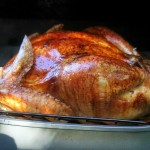
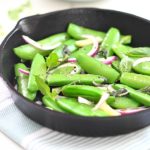
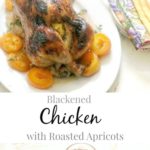
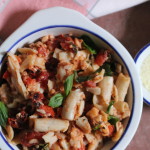
6 Comments
Jane Gleason
August 23, 2013 at 8:18 amExcellent article about the value of whole foods. This is so well done. One of the most professional I have seen. Great info. Jane
Mindy Whipple
August 23, 2013 at 12:06 pmGreat information and such encouragement to keep eating as many unprocessed foods as we can. Now if you could just get me to skip dessert : ) Have a great weekend Robyn!
SizzleandZoom
August 25, 2013 at 1:53 amI’ve read all your articles so far on the medicinal value of whole foods. This is some of the best information I’ve ever read on food and health. Thank-you so much.
Robyn
August 26, 2013 at 5:06 pmSo glad everyone found the information valuable. I am fascinated by the health benefits of whole foods and I plan to incorporate more of this in the future.
Thanks so much for visiting! Hope you all had a fabulous weekend.
alternative treatments cancer
September 19, 2013 at 2:11 amThank you for sharing such a wonderful and informative article like this. I am so thankful for all the information you had given here. Keep posting!
Eileen
November 27, 2014 at 12:07 pmI discovered your Medicinal Value of Whole Foods (Part 3) – simply fresh dinners page and noticed you could have a lot more visitors. I have found that the key to running a website is making sure the visitors you are getting are interested in your subject matter. There is a company that you can get visitors from and they let you try the service for free. I managed to get over 300 targeted visitors to day to my site. Check it out here: http://exit.pk/2